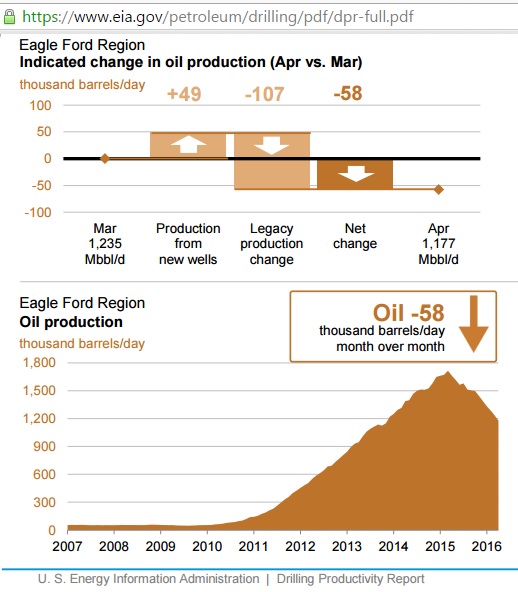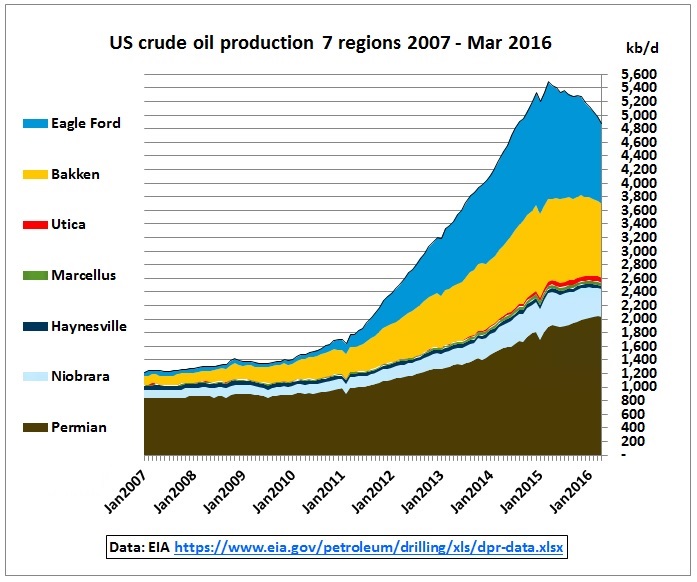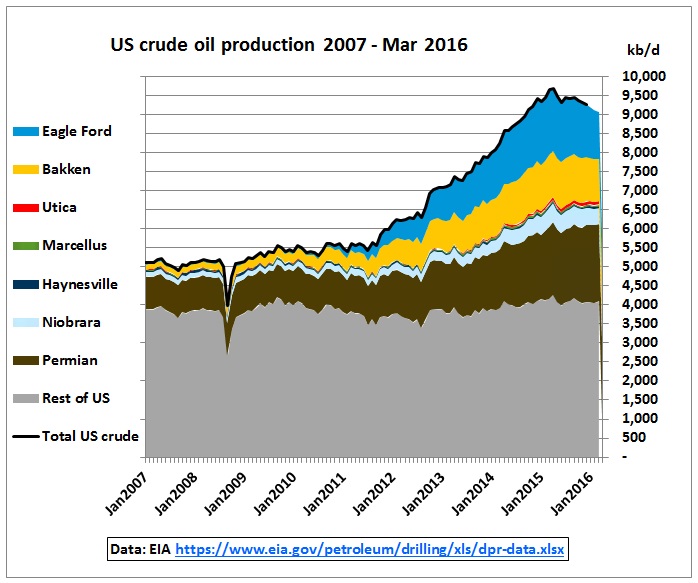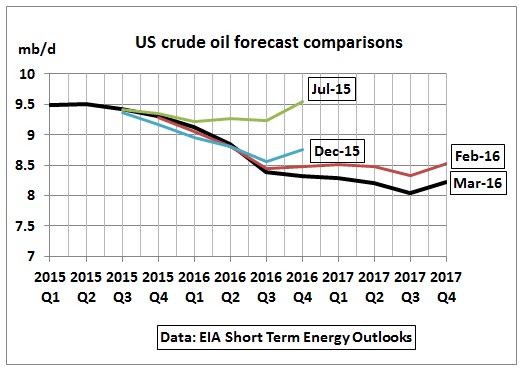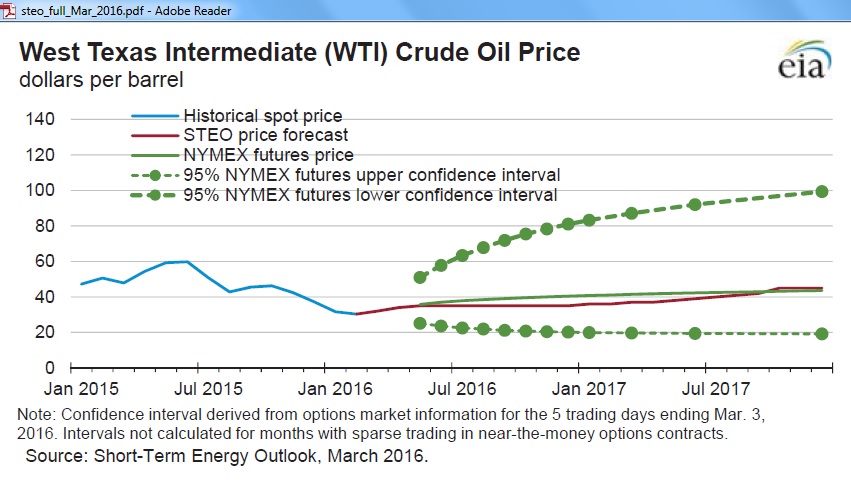The recent EIA drilling productivity reports show a peaking of shale oil production in the main production regions. https://www.eia.gov/petroleum/drilling/
Fig 1: Bakken production change from old/new wells
The 1st panel shows that the number of drilling rigs has dropped sharply but the initial well production per rig has increased from 450 b/d to 750 b/d. The 2nd panel depicts the monthly production decline in old wells, which has stabilized at around 60 kb/d. This is the volume needed to keep production flat but the 3rd panel shows that new wells offset only about half of the decline. That is why in panel 4 overall production declines.
Fig 2: History of production change
We see that in 2015 production from new wells declined abruptly. The intersection point with old wells corresponds to the peak in production. The old wells decline has moderated suggesting that more and more old wells have entered their phase of final, flat production at very low levels.
Fig 3: Eagle Ford production change from old/new wells
Fig 4: Permian production change from old/new wells
Fig 5: Crude oil production from 7 regions covered in the report
Data are from here: https://www.eia.gov/petroleum/drilling/xls/dpr-data.xlsx
Let’s add the rest of the US:
Fig 6: Total US crude production
Forecasts to end 2017 in EIA’s Short Term Energy Outlook
Fig 7: US crude oil forecasts
We see that forecasts by the EIA have been revised downwards since mid of last year. Production at the end of 2017 is expected to increase modestly as a result of rising oil prices.
Fig 8: Oil price range assumed by the EIA
March 2016 Short Term Energy Outlook http://www.eia.gov/forecasts/steo/
Conclusion:
The so-called US shale oil revolution got stuck in 2015. The longer oil prices remain low, the more the 2015 peak will establish itself. There are no free-bees here. Pay less for oil and you will get less oil.


